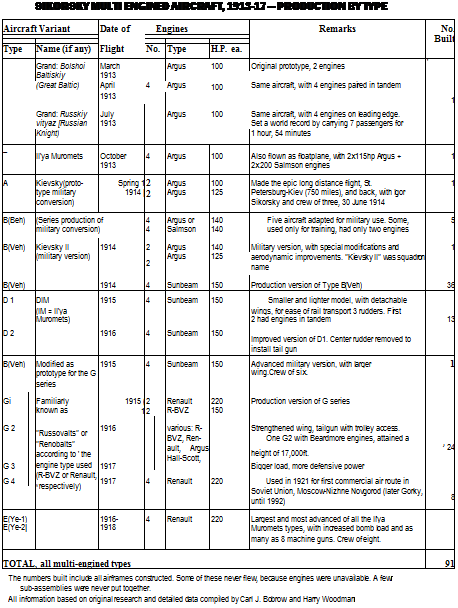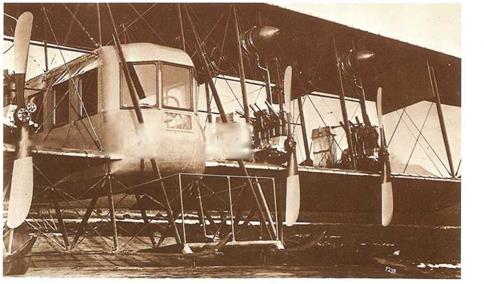|
Ploughshares into Swords
Just before the first Il’ya Muromets made its historic round-trip from St Petersburg to Kiev (page 8), on 28 June the Austrian Archduke Ferdinand was assassinated in Sarajevo and Austria declared war on Serbia a month later. On 1 August Germany declared war on Russia, which had decided, on 25 July, to support Serbia. Amid frantic mobilization for war, Sikorsky’s plans for his fine machine came to an end, at least for commercial purposes.
The E. V.K.
But the ability of the Il’ya Muromets to carry heavy loads over long distances was noted by many military minds. The Russo-Baltic Works chairman, Mikhail Shidlovsky, convinced the Russian High Command, the Stavka, that it had military applications, and in December 1914 he was instructed to create the Escadra vozduzhnykh karablei (E. V.K.), or the Squadron of Flying Ships, to perform flying duties on the Eastern Front, where Russia was engaged in a life – or-death struggle with the Central Powers, and had already suffered a massive defeat at the Battle of Tannenburg at the end of August 1914.
By 1915, the first units were deployed at Jablonna, near Warsaw, and in Galicia. Sikorsky then began to install different engines: French Renaults, British Sunbeams, the home-built R – BVZs, and other types. On 24 January 1915, he demonstrated Il’ya Muromets performance by climbing to 2,500m (8,000ft) in 49 minutes, and then climbing to 3,300m (11,000ft). The E. V.K. carried out bombing missions, with bomb loads of up to and even exceeding 680kg (1,5001b); yet the reception by the front-line commanders was lukewarm, at a time when the cry should have been "send us more Sikorskys."
|












